Was The Concorde A Marvel Or A Misstep In Aviation History?
In the late 20th century, the Concorde emerged as a dazzling symbol of human ingenuity and the quest for speed. This sleek, needle-nosed jet wasn’t just another airplane—it was a technological marvel that promised to shrink the world by cutting flight times in half.
But behind its glamorous facade lay a series of challenges that would ultimately define its legacy. Was the Concorde truly a revolutionary achievement, or was it a bold experiment that flew too close to the sun?
A bold innovation
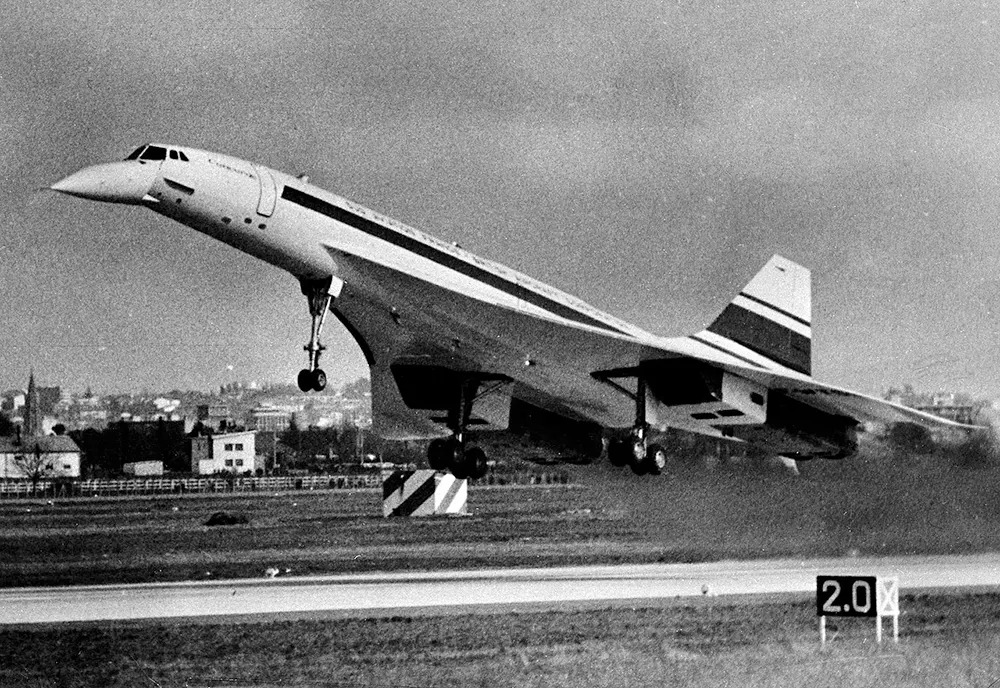
The Concorde was an aviation masterpiece packed with cutting-edge technology.
One of its coolest features was the droop nose, which tilted down during takeoff and landing to give pilots a better view of the runway. This clever design showed just how innovative the Concorde was.
It also used a modern fly-by-wire system for smooth control. Even its name, “Concorde,” reflected the unity between British and French engineers who worked together to bring this supersonic plane to life.
Too expensive for the skies

While the Concorde wowed the world with its speed, its high production costs and steep price tag quickly became a deterrent for potential buyers.
The supersonic dream came with a hefty price—over $20 million per unit—which significantly exceeded the budgets of many airlines.
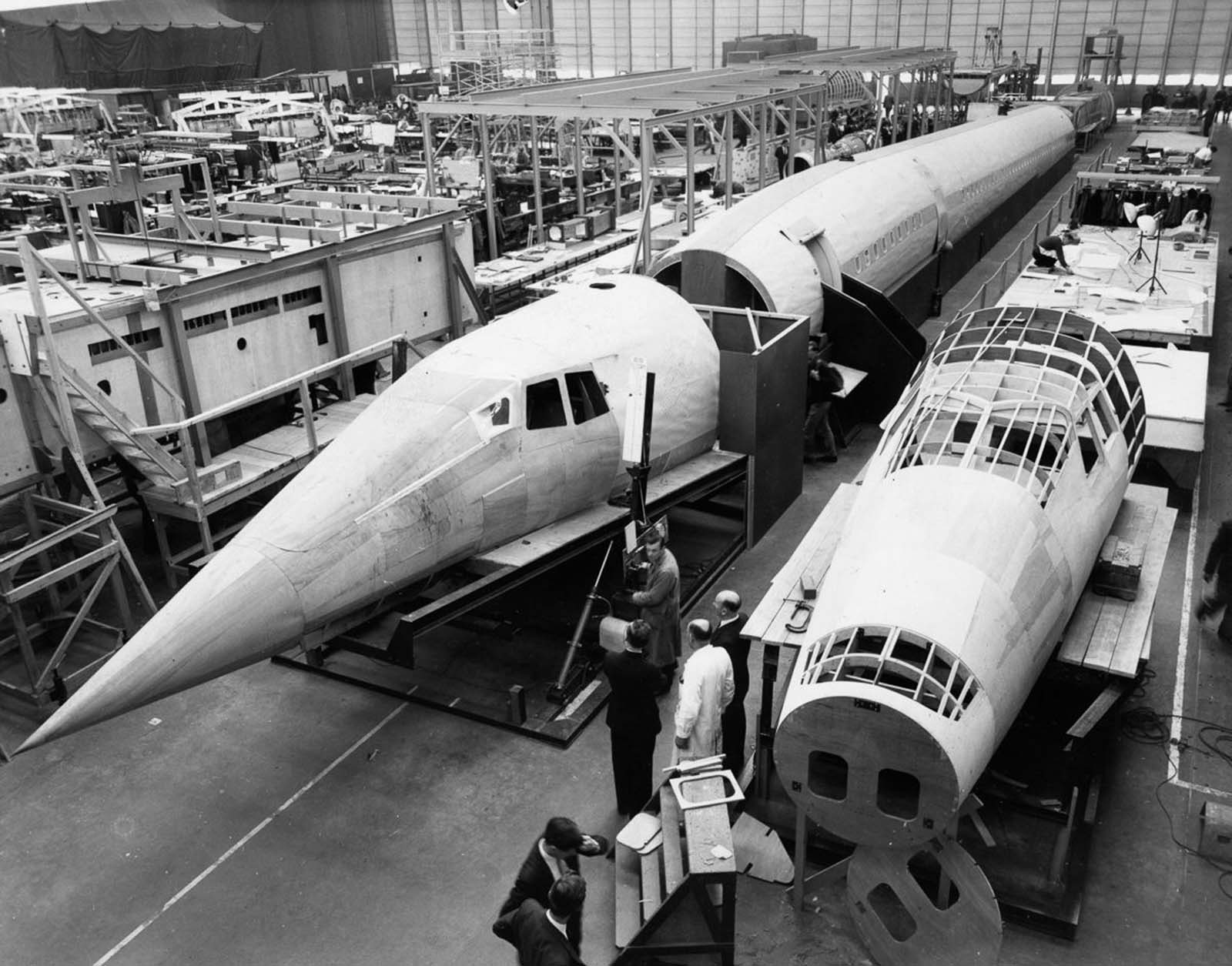
And if you wanted to fly on the Concorde, a round-trip ticket between London and New York would set you back about $8,000!
These sky-high prices meant only the wealthy could afford it, making the Concorde a rare and exclusive experience.
A fuel-hungry jet with a noisy problem
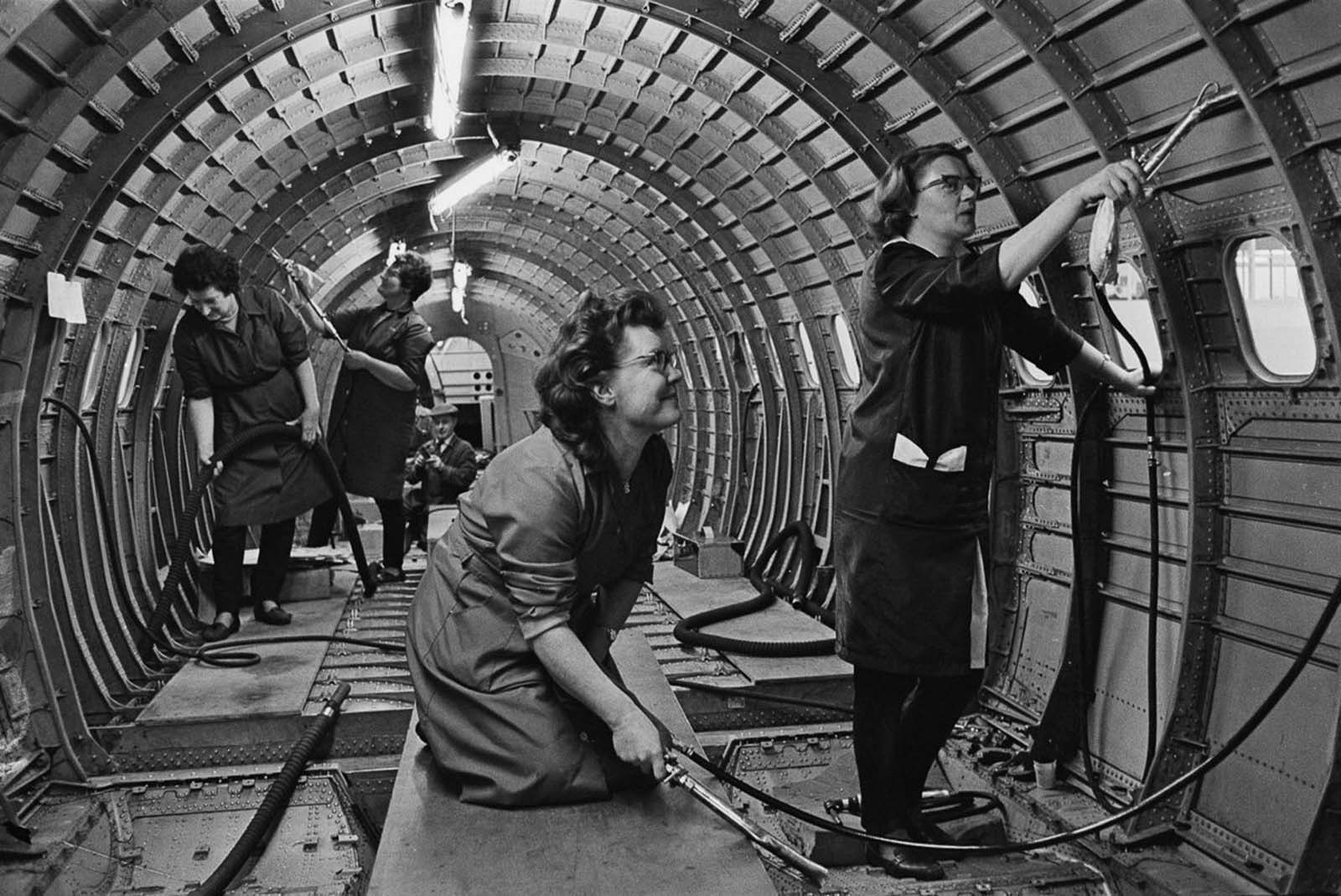
The Concorde was fast, but it guzzled fuel like no other. A single transatlantic flight burned through over 89,000 liters of fuel—way more than a Boeing 747, which carried more passengers on less fuel.
The 1977 oil crisis made this even more of a headache. Plus, its super-fast speed caused a loud sonic boom, which was very noisy and bad for the environment, so there were limits on where the Concorde could fly.
A speedy icon’s final journey
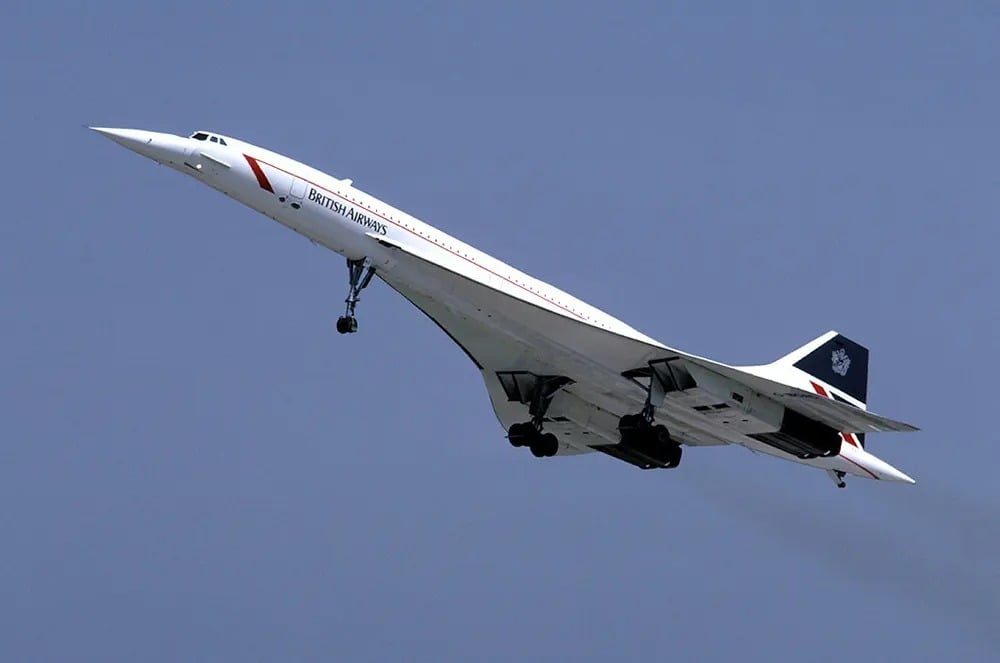
The Concorde started with big dreams but ended in tragedy and decline. A crash in 2000, where a Concorde went down in France, shook people’s trust in the plane.
The tragic events of September 11, 2001, further dampened the aviation industry, reducing passenger numbers across the board.
By April 2003, the final chapter was written as British Airways and Air France announced the retirement of the Concorde, signaling the end of an era for supersonic passenger travel.
Marvelous photos of supersonic passenger jets
1. Model lineup of Concorde design options, final design at the far end

2. November 29, 1962: France and UK sign agreement to build Concorde

3. Concorde model displayed at Farnborough Air Show, 1962

4. Designers and passengers in Concorde cabin, 1964

5. Workers on Concorde prototype wing, 1967
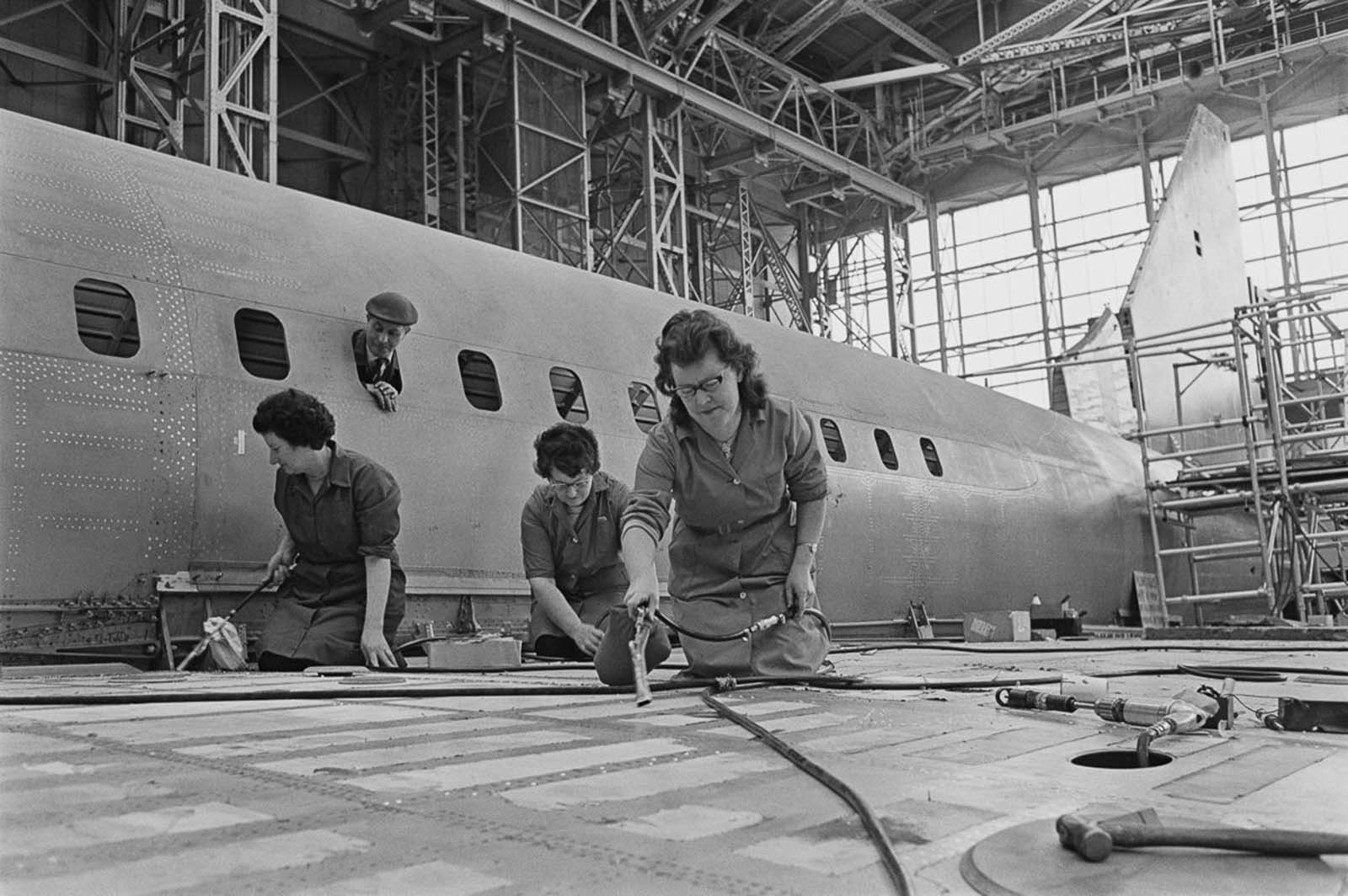
6. Concorde prototype vibration tests in Toulouse, 1967
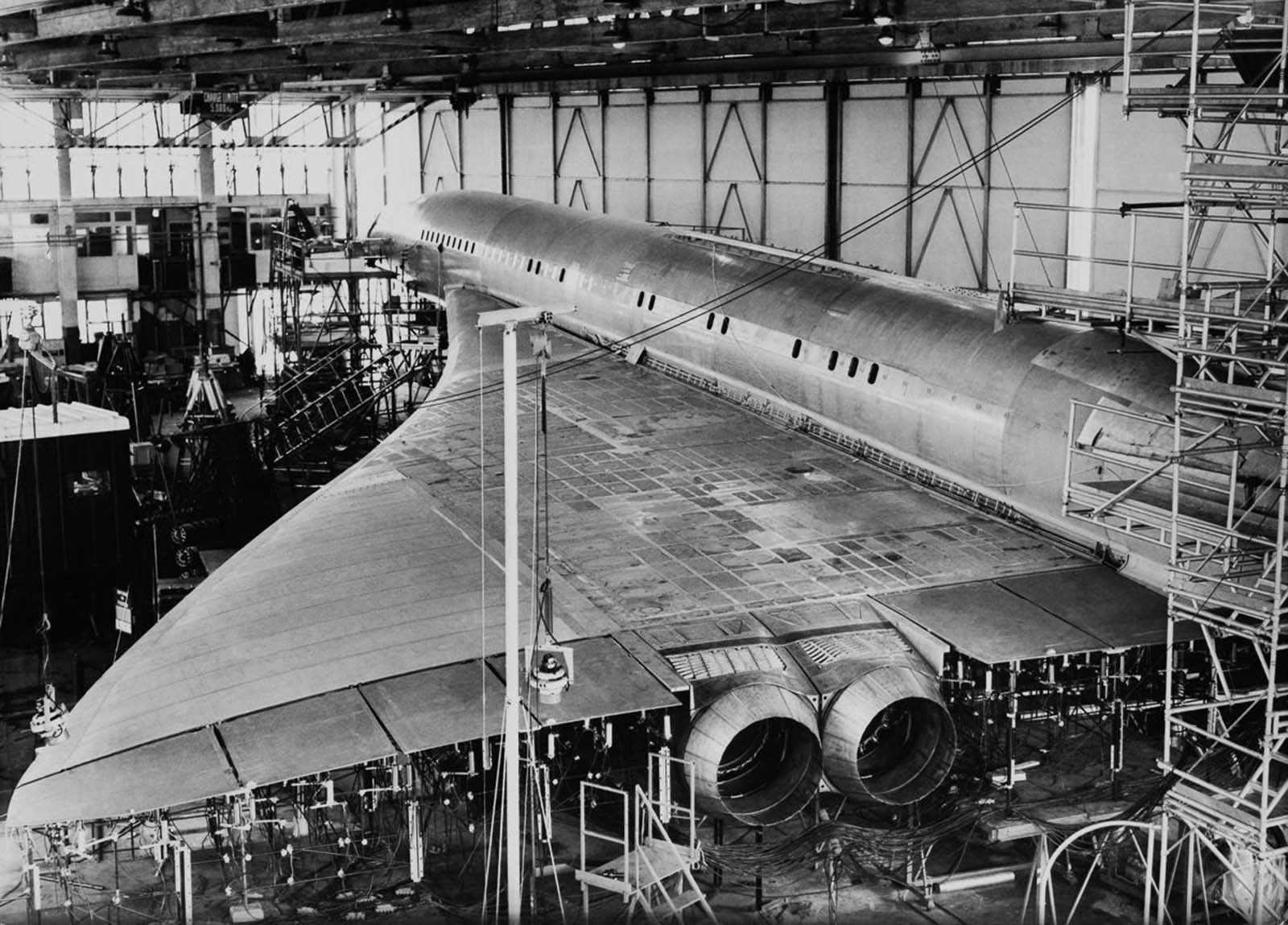
7. Concorde built in UK and France under international agreement
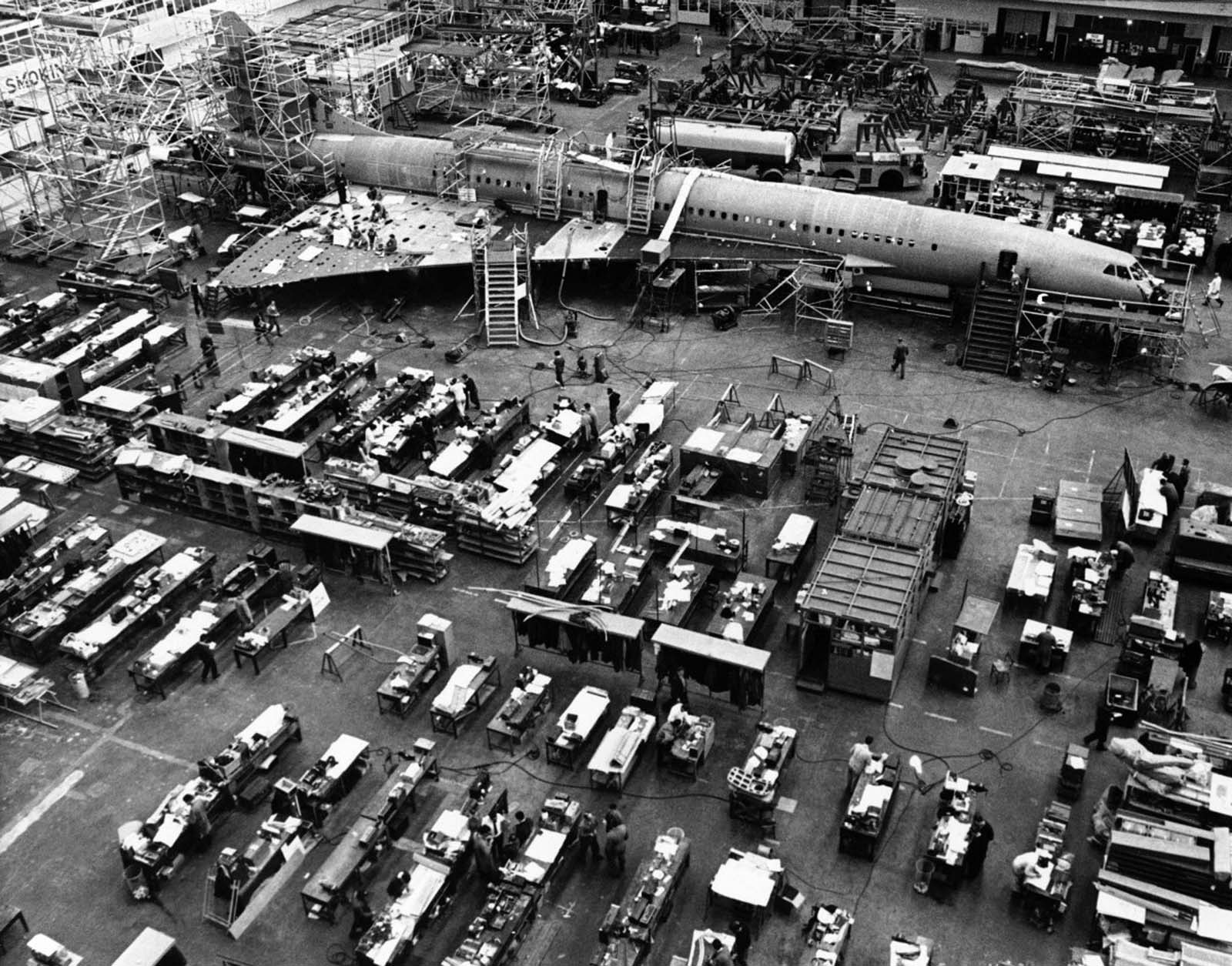
8. Olympus 593 turbojet engine chosen for Concorde
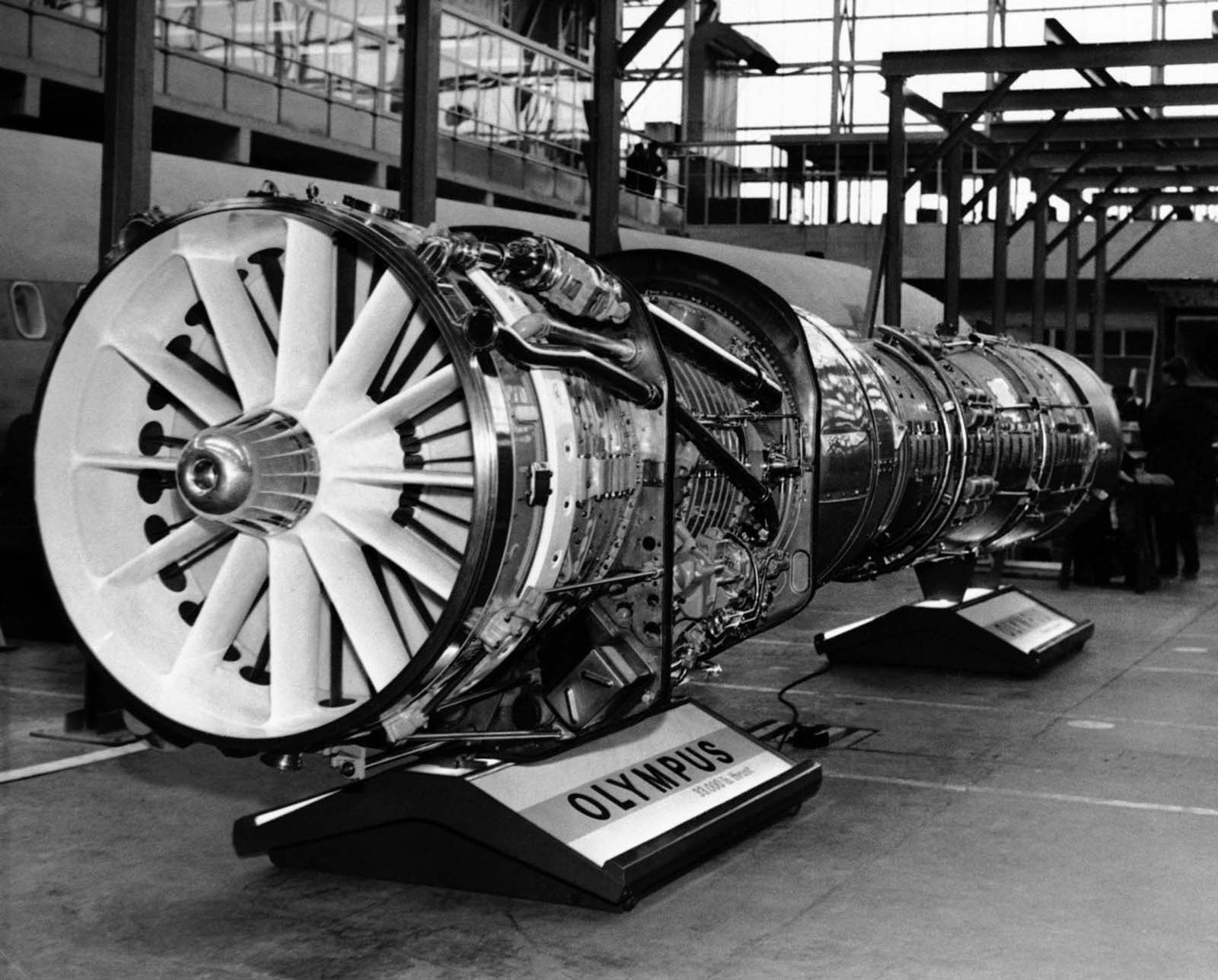
9. Pilots and flight attendants at Concorde roll-out ceremony, 1967
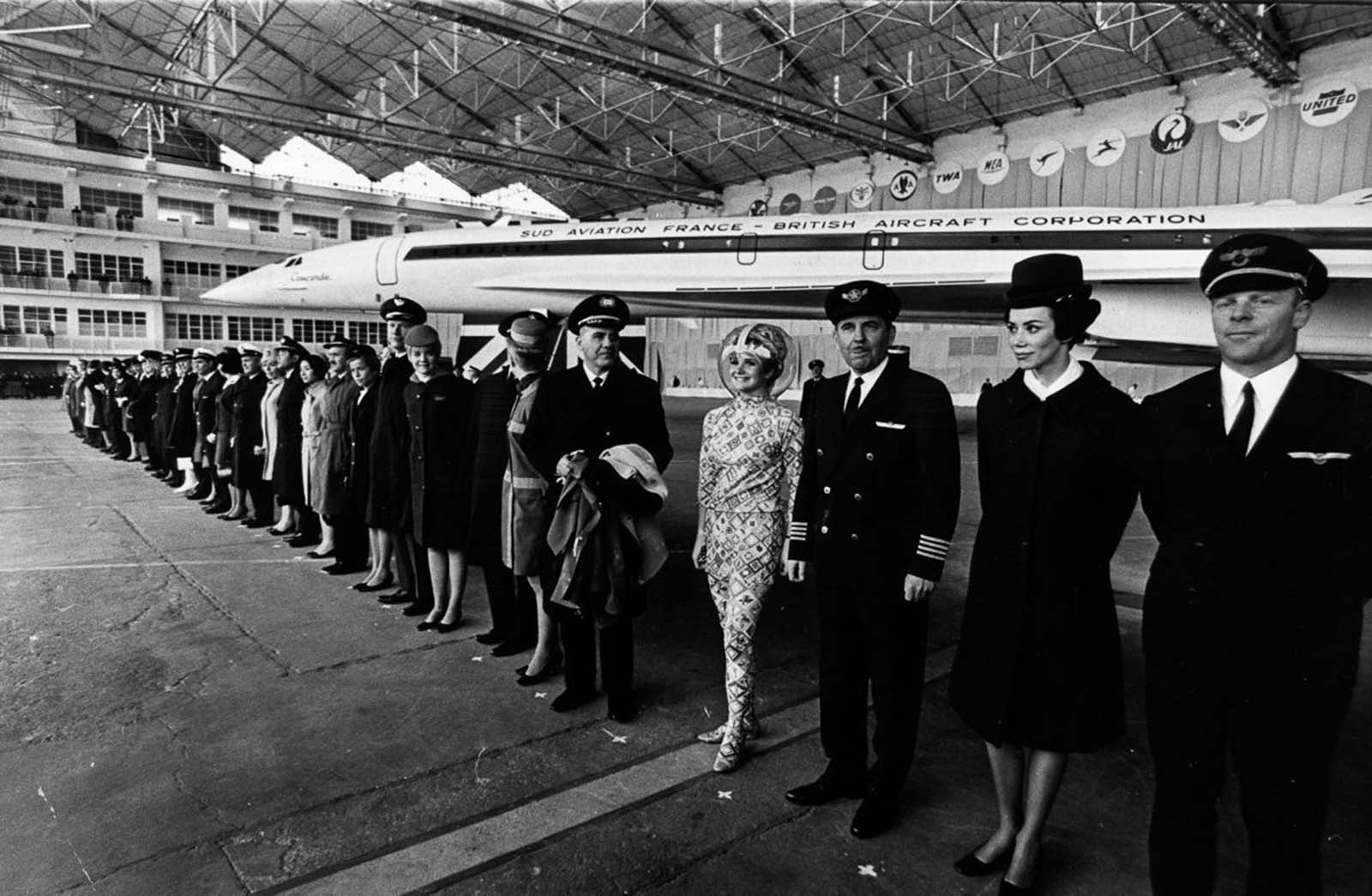
10. Full-scale wooden Concorde model on display, 1967
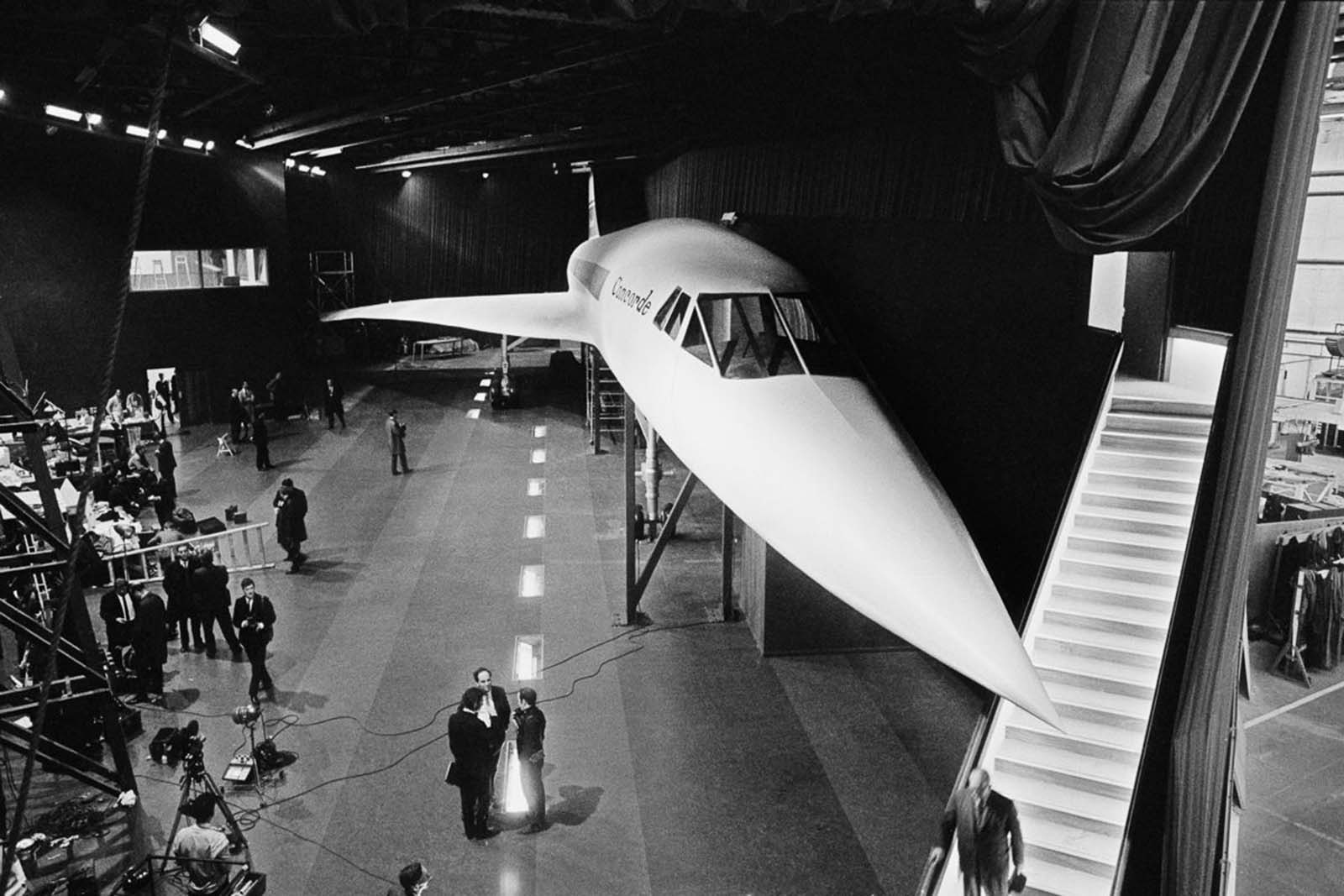
11. Queen Elizabeth II visits Concorde development factory, 1966

12. Sugar model of Concorde, 1965
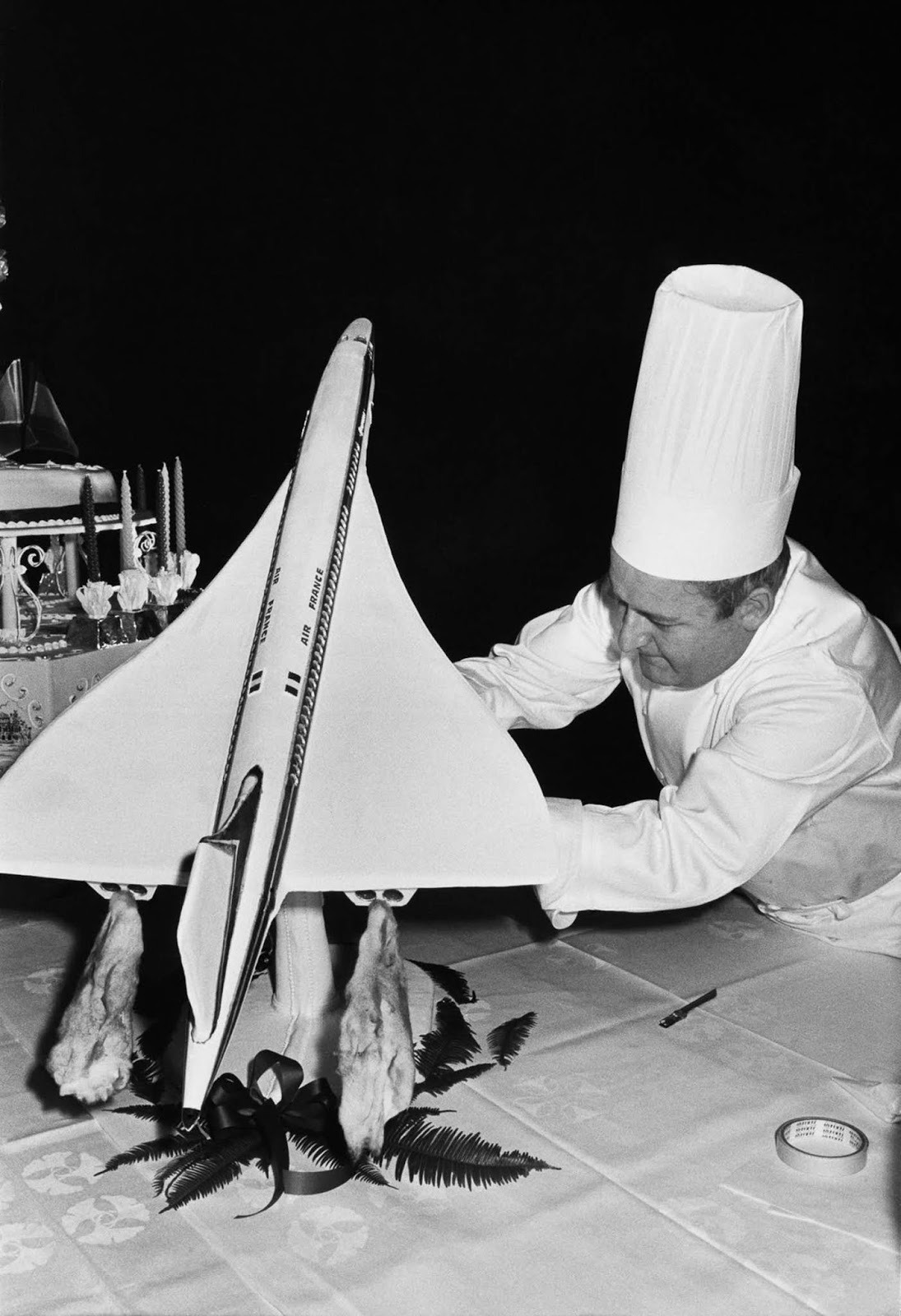
13. Early Concorde prototype test, 1968
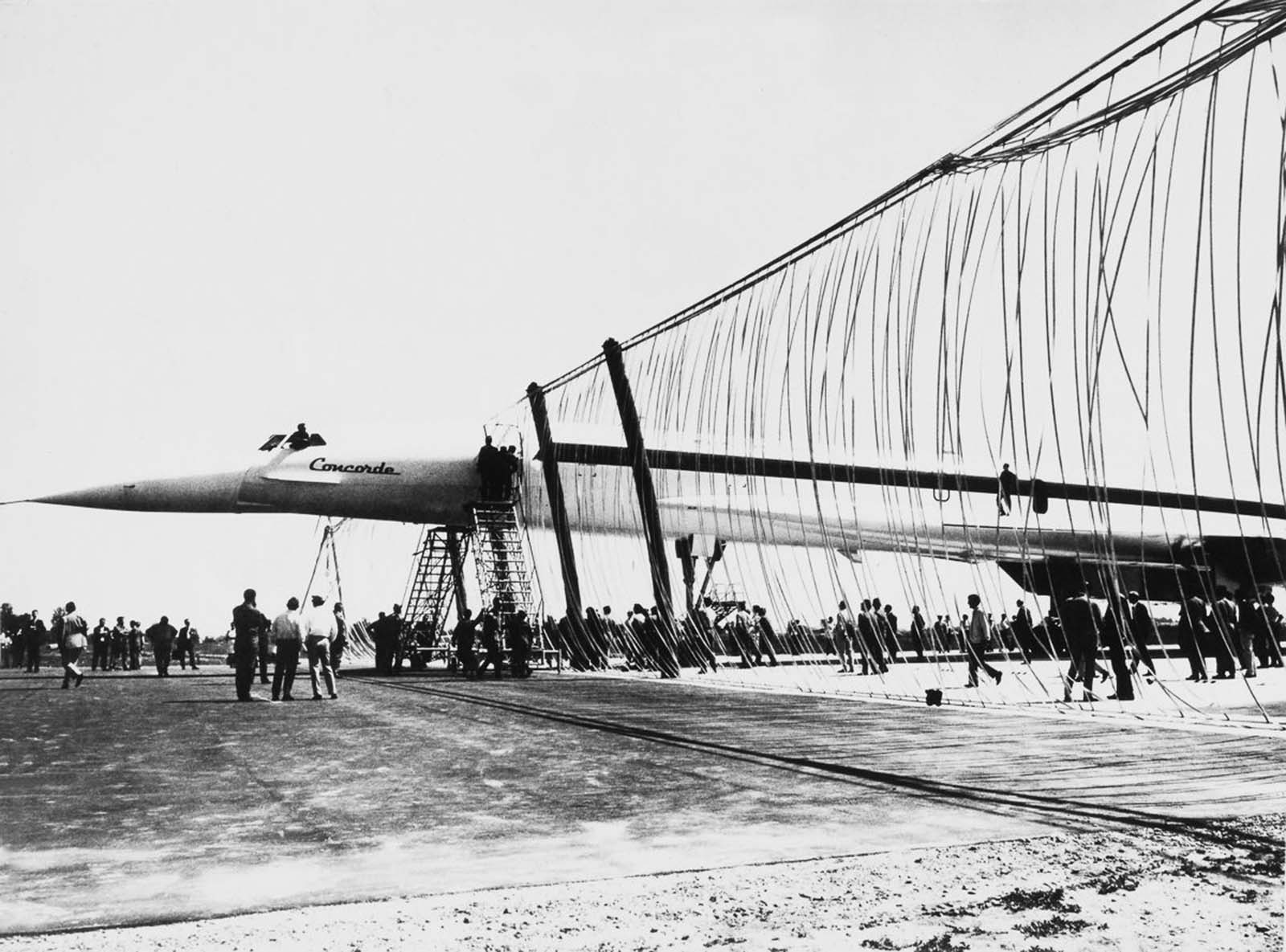
14. Model with Concorde-inspired makeup and hairstyle, 1969
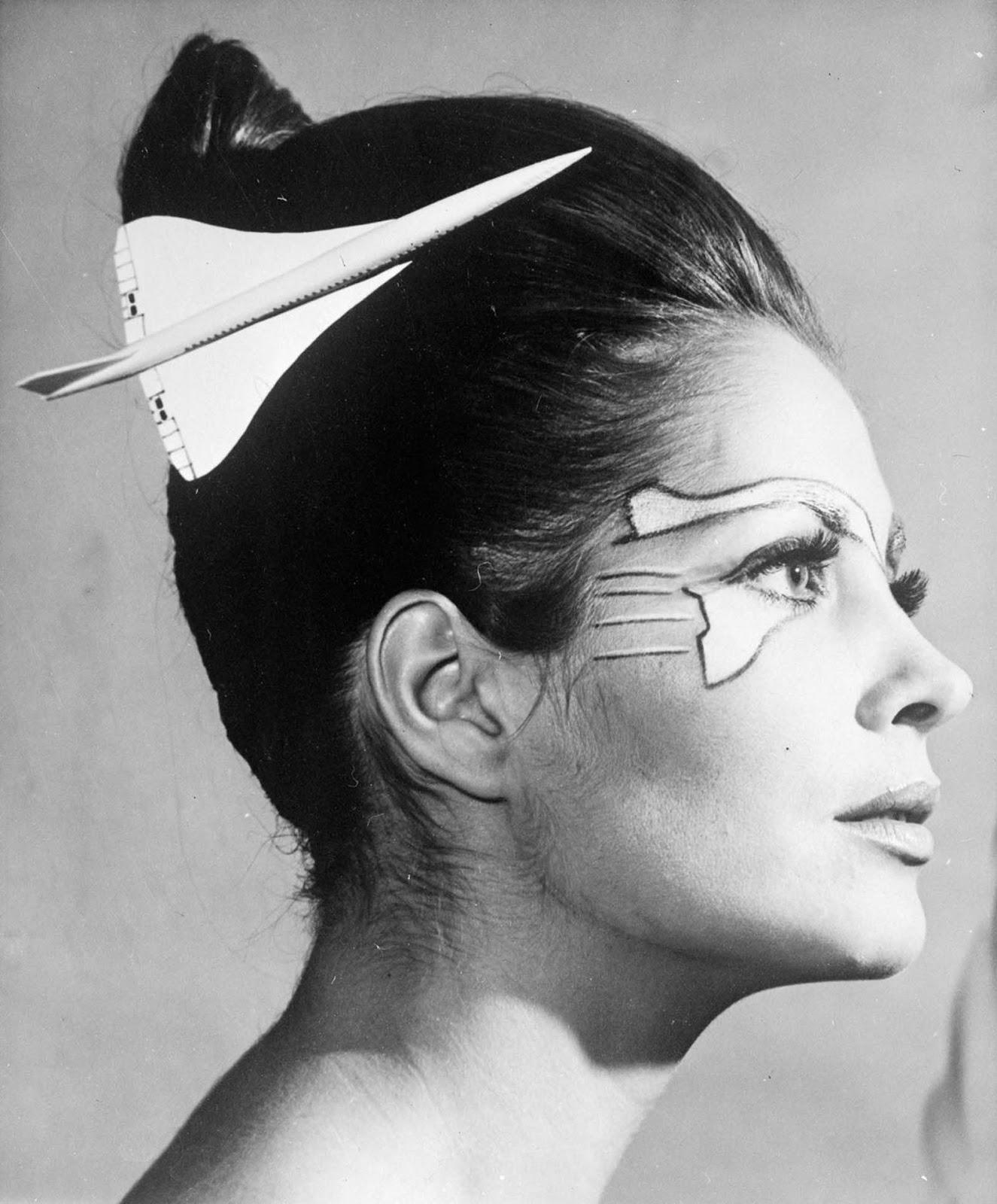
15. Concorde taking off with smoky afterburners
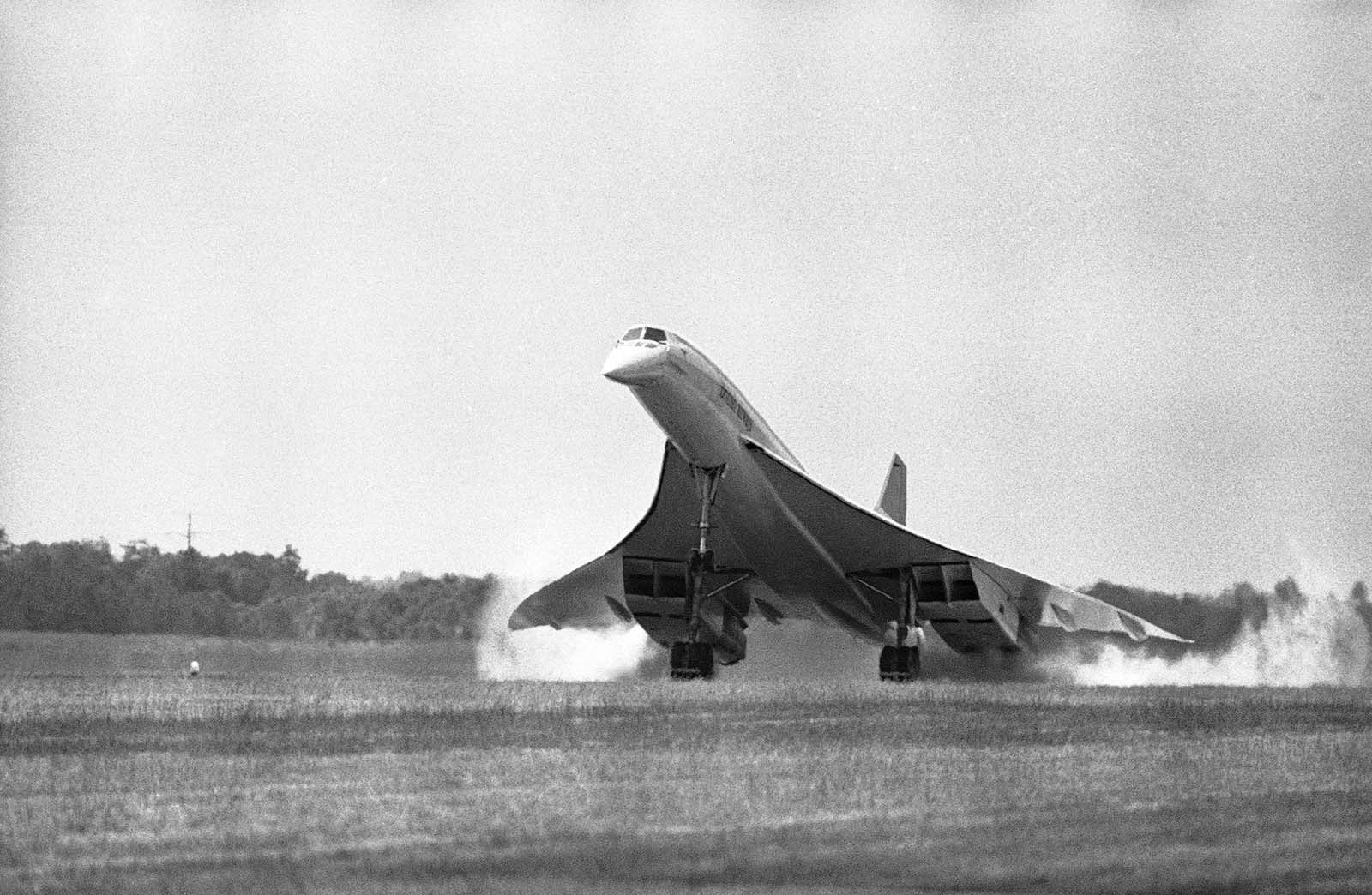
16. Olympus engine produces 38,000 pounds of thrust
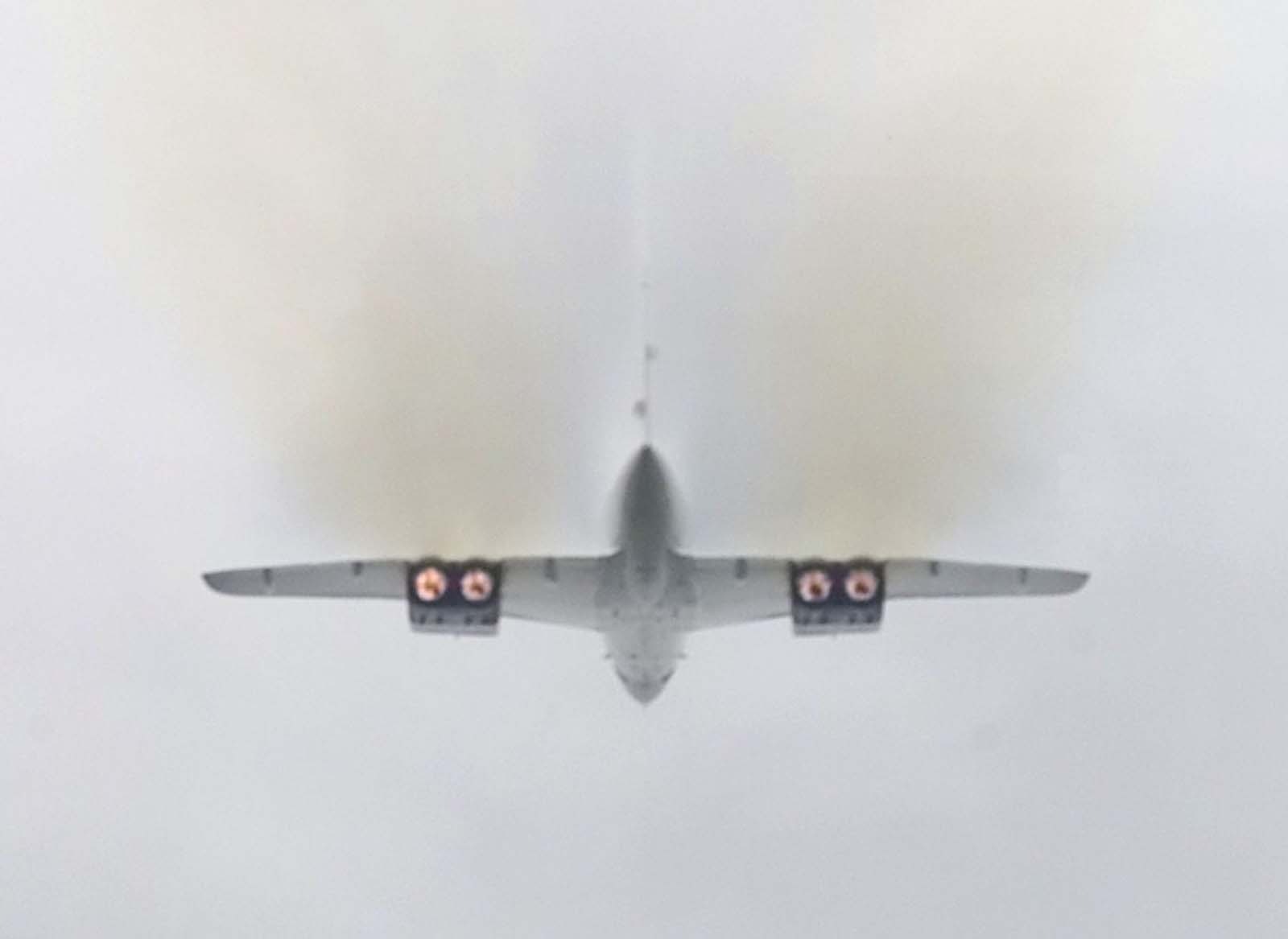
17. Concorde features unique double delta wing

18. Concorde crew: two pilots and a flight engineer
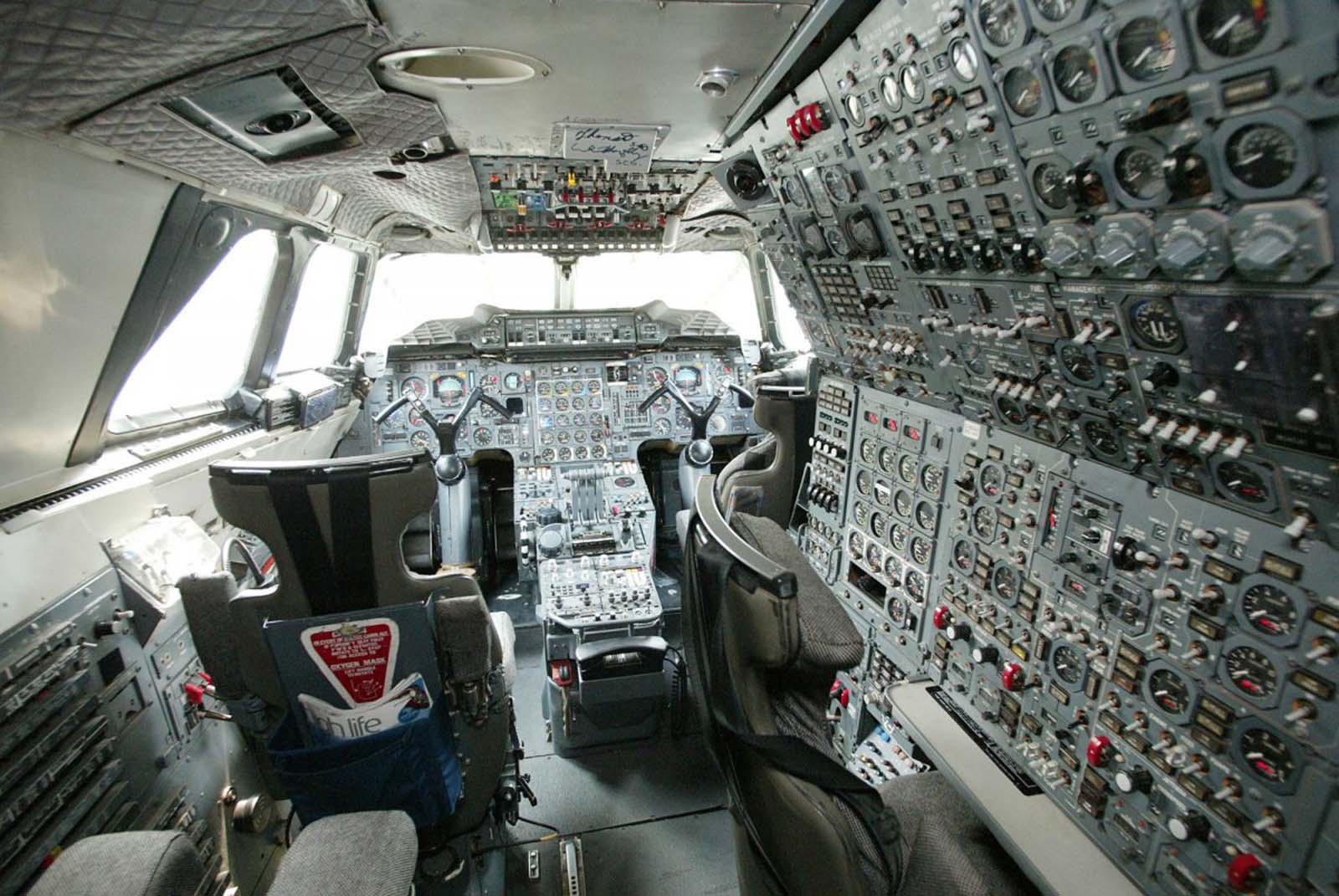
19. Concorde first public presentation in Toulouse, 1967
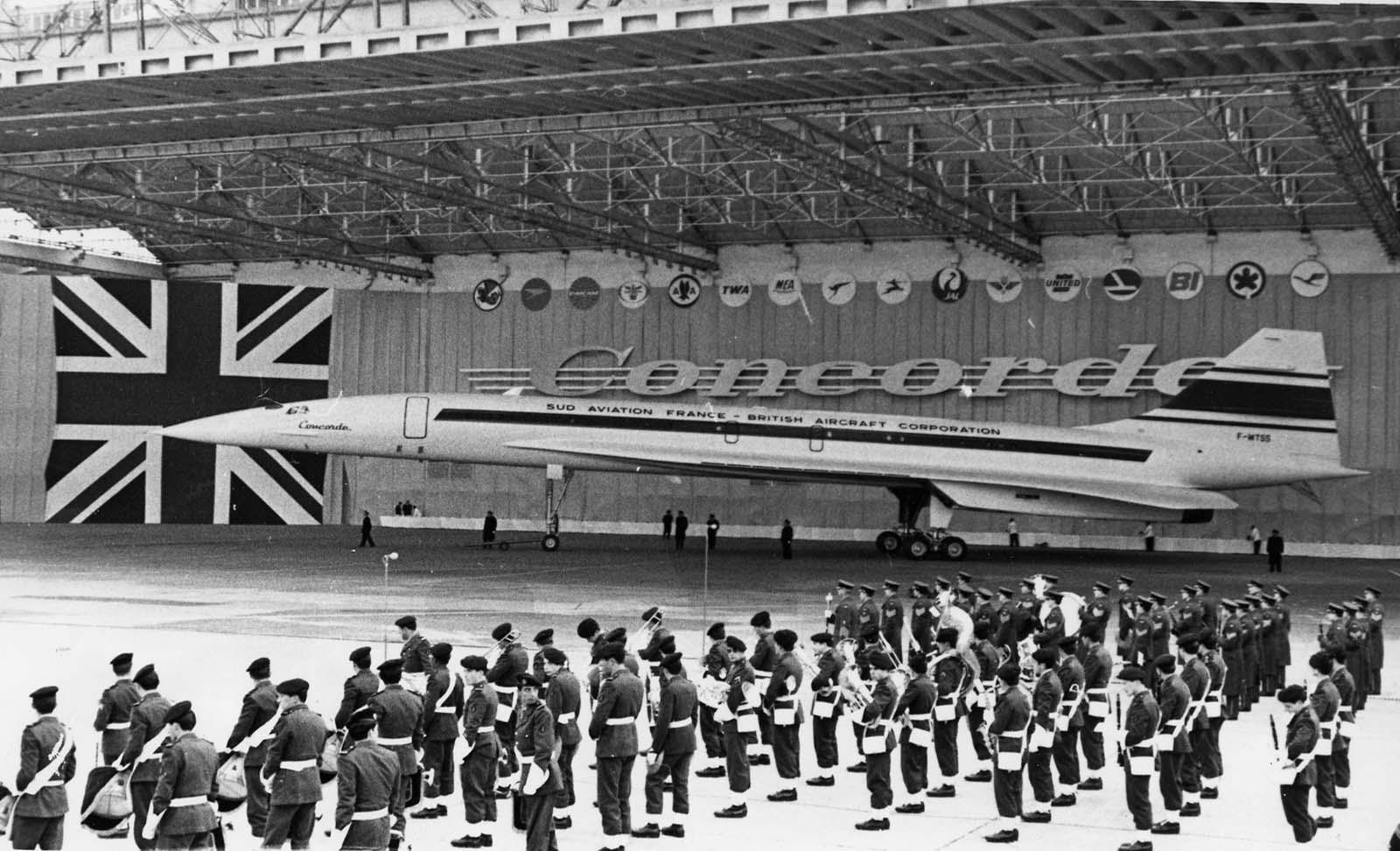
20. First Concorde prototype’s maiden flight in March 1969
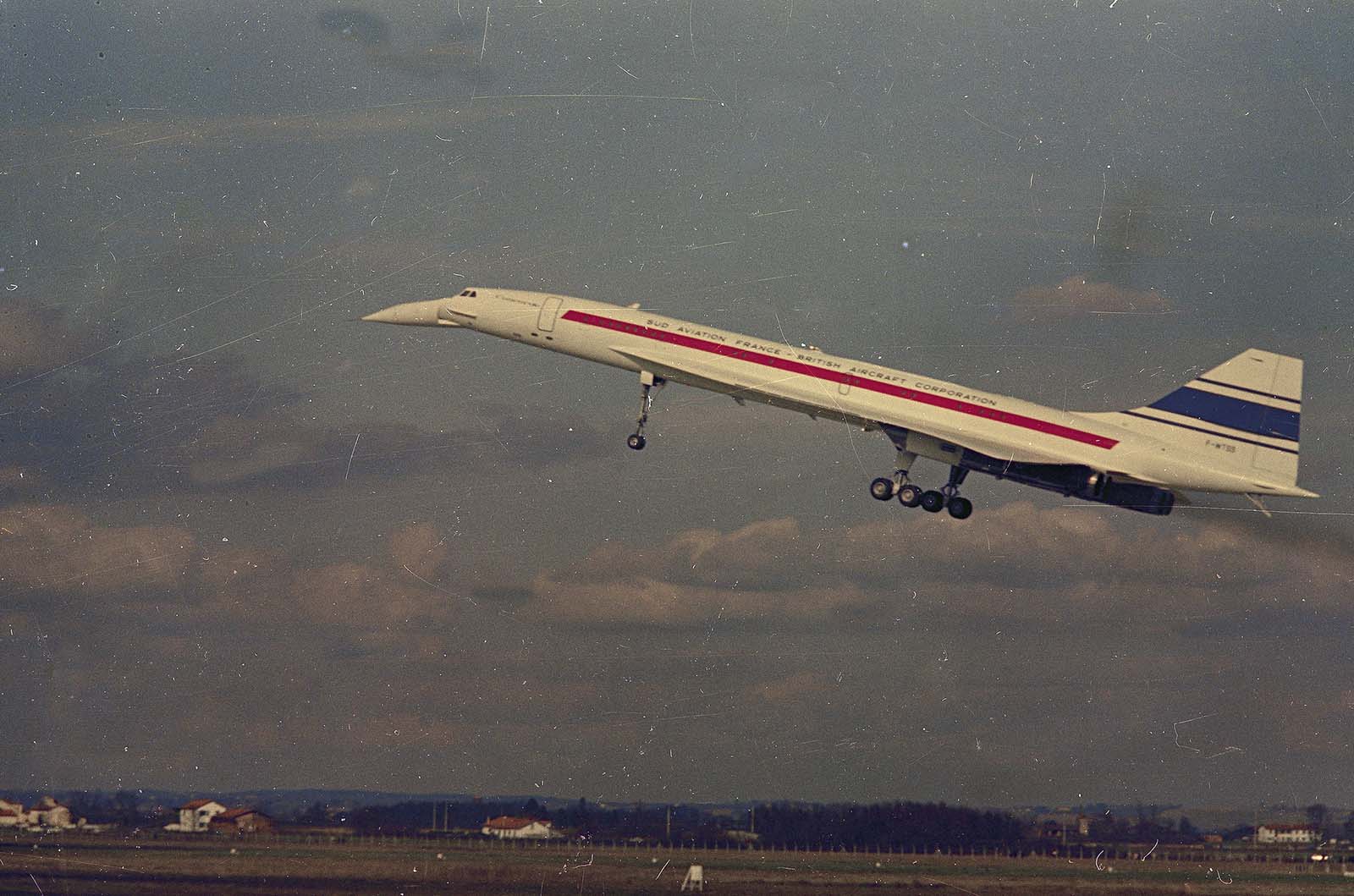
21. Global airlines place orders for Concorde
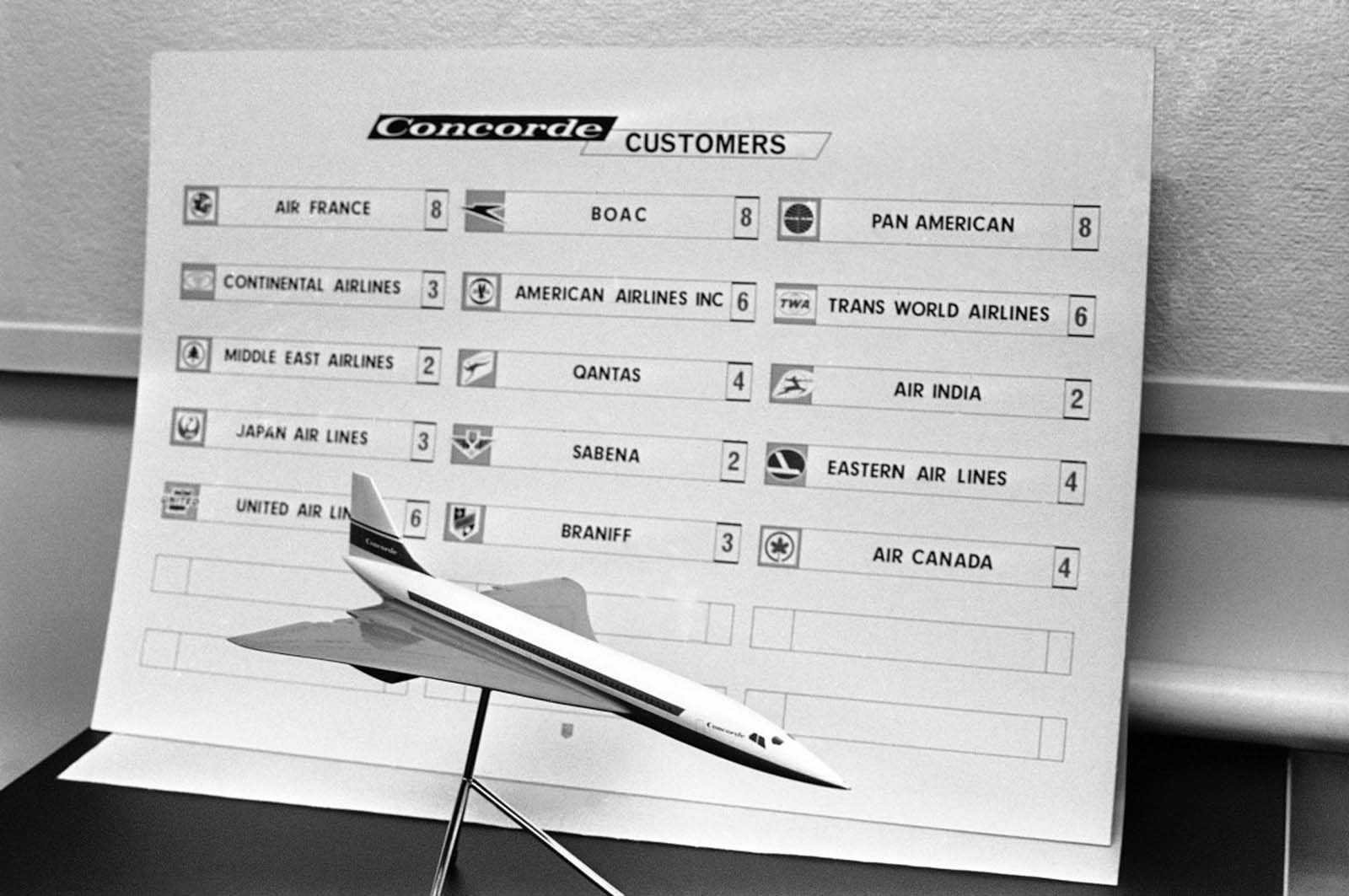
22. Airport residents protest noise from Concorde’s engines

23. Initial Concorde interior was simple and austere

24. July 25, 2000: Air France Concorde crash due to tire blowout
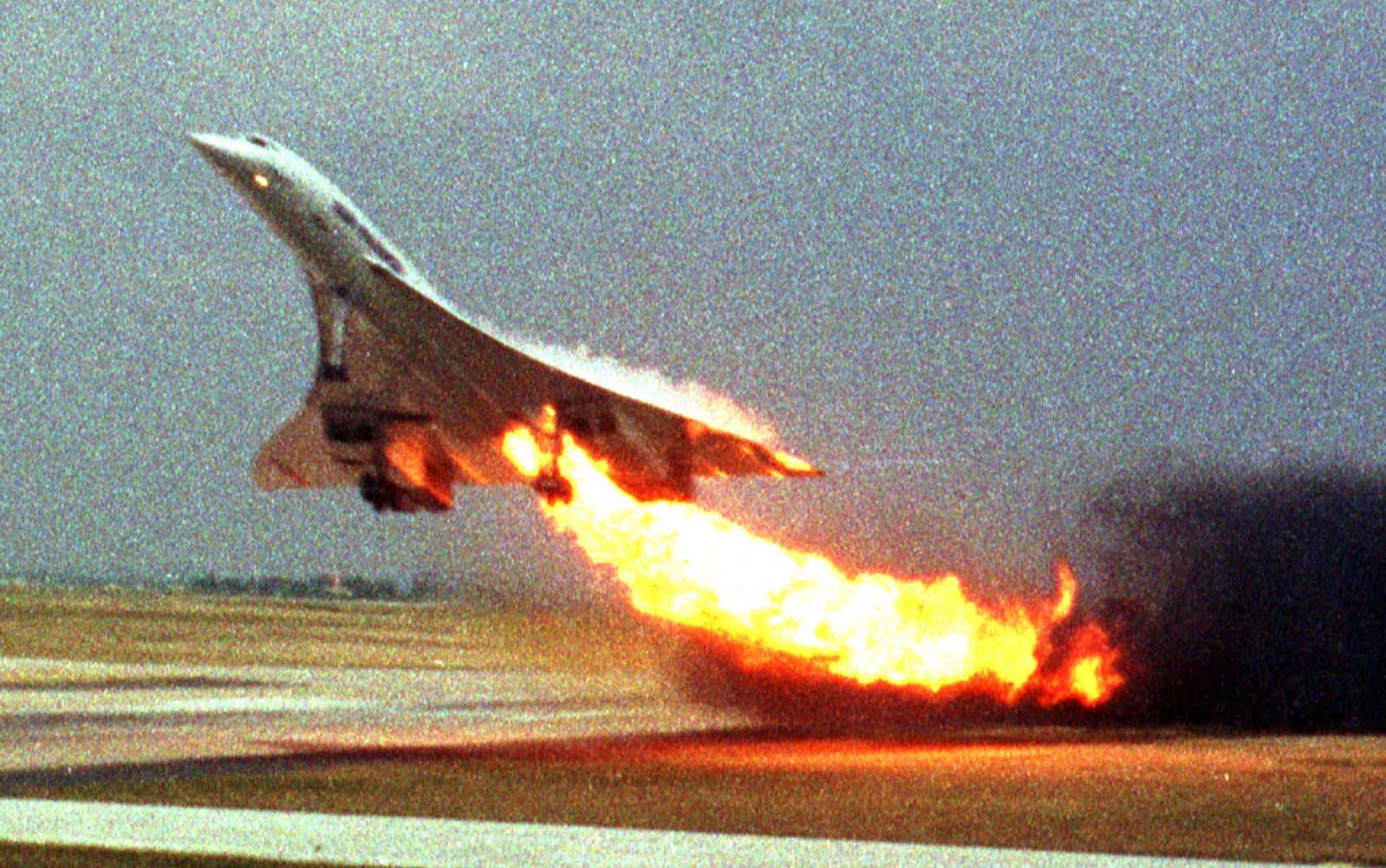
25. Spring 2003: Air France and British Airways announce Concorde retirement

26. Concorde’s early visit to Heathrow Airport, July 1, 1972
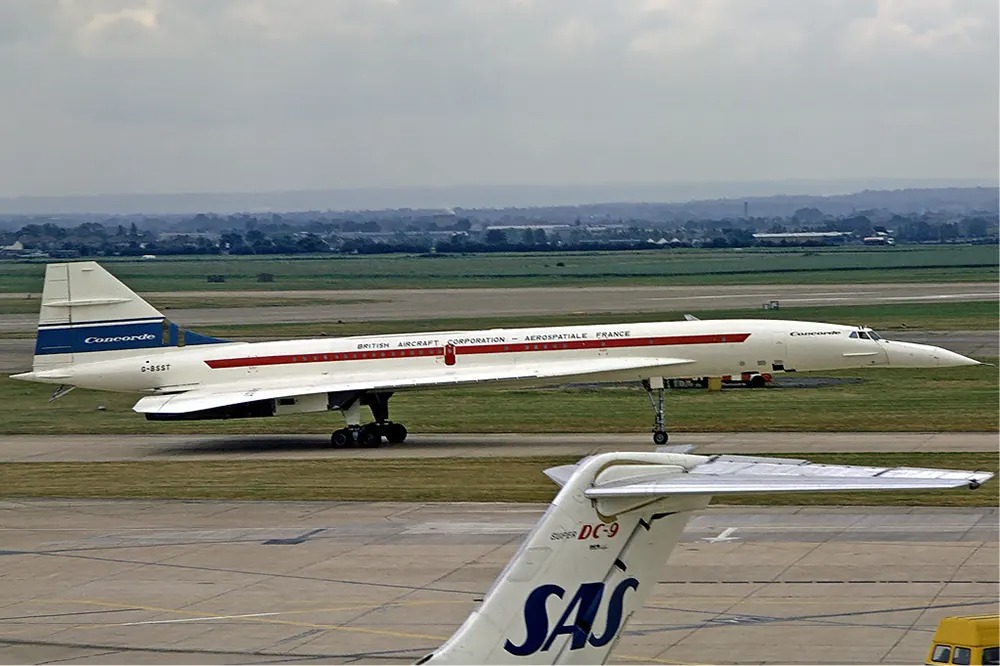
27. Concorde flight deck layout
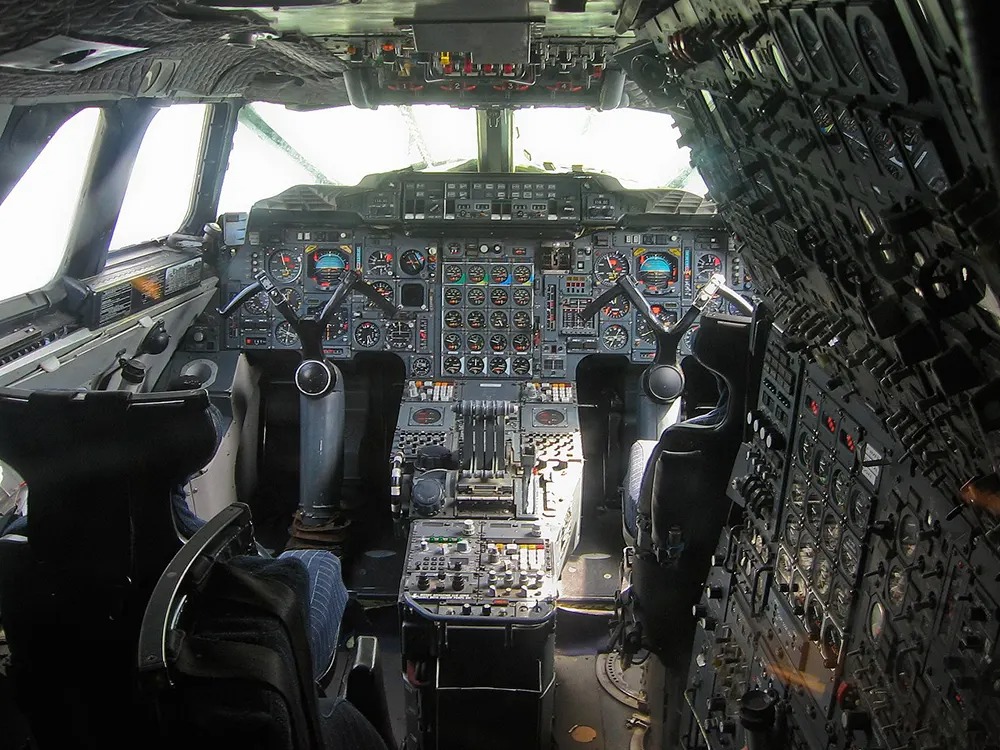
28. Close-up of Concorde engine nozzles, production model F-BVFB

29. Concorde landing at Farnborough, September 1974

30. British Airways receives first Concorde at Heathrow, January 15, 1976
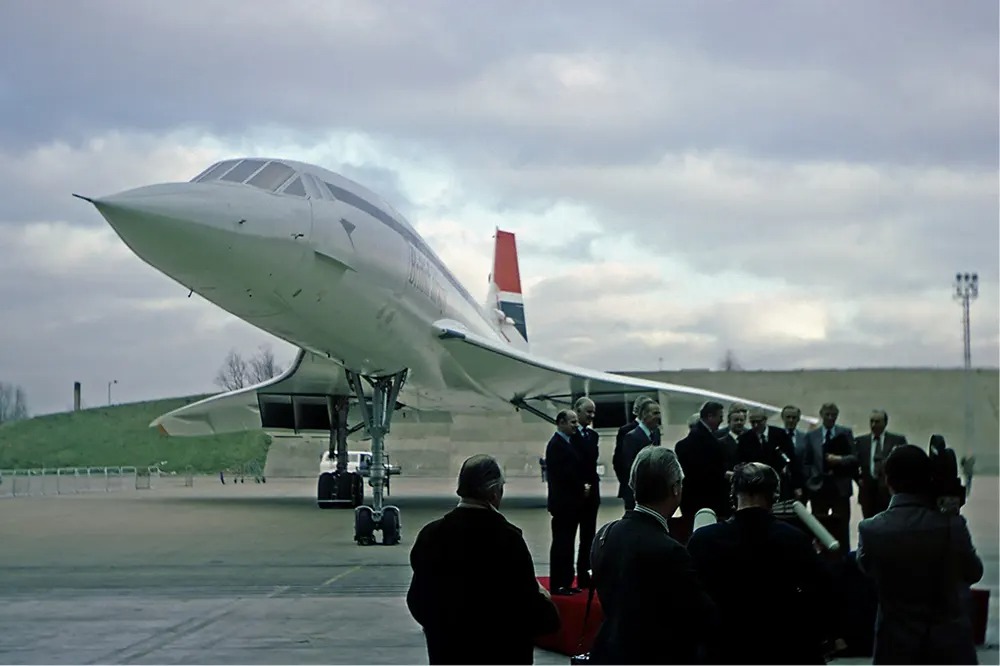
31. British Airways Concorde in Singapore Airlines livery, 1979
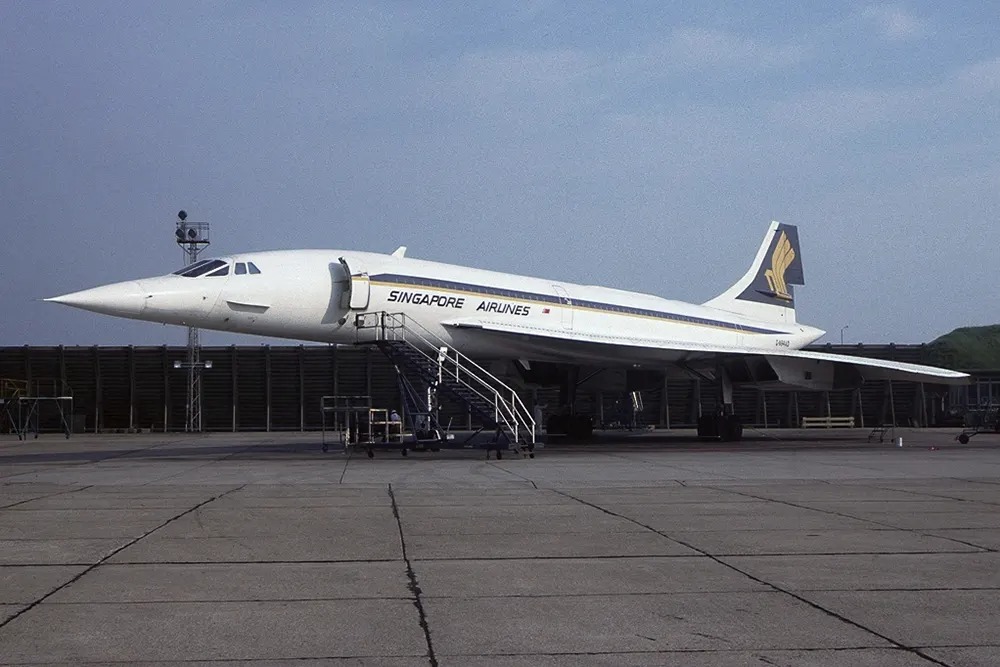
32. Air France Concorde at CDG Airport, 2003


